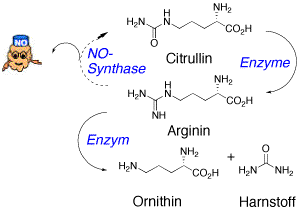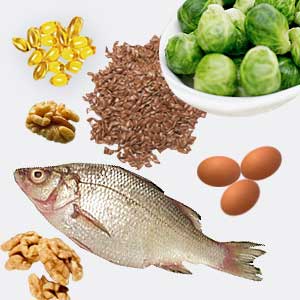
But What "Fruit"?
Do not confuse the ideas to the people, the nuts are seeds. And instead, are defined by many nutritionists "nuts" (Frutta Secca) (which is the juicy dried fruit: raisins, prunes, figs and so on., Nutritionally with zero fat and treated with honey and sugar). So people might think that should be calculated between the 5 or 6 servings of vegetables and fruit recommended every day. Others, however, translating from nuts, put them among the "nuts" in general (almonds, hazelnuts, pistachios, pine nuts, cashews, etc.), making further confusion. But to be rational, that is nutritionally correct, just use the category of oilseeds, which covers all the seeds are high in fat, big and small: from the sesame nuts, from almonds to sunflower seed. There would also be soybeans, oil seed that is also a legume widely.
The real nuts (Juglans regia) concern us here because they are unique to lipid quality: they are rich not only in monounsaturated fatty acids (MUFA, mono unsaturated fatty acids, is the definition used in scientific studies) and polyunsaturated (PUFA) n - 6 (linoleic acid), but also rare polyunsaturated n-3 (linolenic acid, ALA: ben 9 percent). The latter, once in the body, depending on the condition of the intestine, results in the active fractions of n-3 (or omega-3), EPA and DHA, which are preformed only in the liver of fish and blue that of cold water.
Walnuts, therefore, are the only plant source, albeit indirect, of EPA and DHA for vegetarians and veg naturist, an abundant, traditional, very pleasant-tasting, and healthy, given that the much trumpeted linseeds in theory even more rich, are not Chewable (small and hard), tasteless, just practical, non-traditional food in our culture, and more rich linarina and linamarina that the chewing and enzymes give rise to dangerous hydrogen cyanide, the poison that is banned the sale of bitter almonds.
Walnats At The End Of Meal, Fat Removes Fat...
But researchers have shown that, contrary to what intuition would suggest, the damage from too much saturated fat (in our diet are mostly associated with meat, salami and cheese) can be reduced more than by the lack of fat, the presence in the same meal, maybe at the end of the unsaturated fatty acids of oilseeds: walnuts, hazelnuts, pine nuts, peanuts, sunflower etc.. In a study of the Polyclinic in Barcelona, eight nuts (28 grams) at the end of the meal, coronary protect against the adverse effect of saturated fat and LDL cholesterol. In the study in the Journal of the American College of Cardiology, their effect would be more beneficial anor olive oil. And we have no difficulty to believe, given the greater presence of polyunsaturated oil in the seeds compared to olive oil.
( "Acute Effects of High-Fat Meals Enriched With Walnuts or Olive Oil on postprandial Endothelial Function." Journal of the American College of Cardiology 48,8,1666-1671,
Authors: B. Cortes, I. Núñez, M. Shade, R. Gilabert, A.Pérez-Heras, E. Casals, R. Deulofeu, E. Ros).
Acute Effects of High-Fat Meals Enriched With Walnuts or Olive Oil on postprandial Endothelial Function. 2006 Oct
Spanish Study
Walnuts Best Of Olive Oil...
We know that meals too rich in saturated fat is a major risk to the human organism. After the meal there is an inflammatory reaction with oxide, which over time harden the arteries and then creating arterosclerosi heart risks. The researchers gave 24 volunteers who had cholesterol levels high enough for two meals of cheese and fatty meats, at a distance of one week between them. After the first meal, subjects were administered 5 teaspoons of olive oil, which has been seen that protects the blood vessels. After the second meal, however, were distributed 28 grams of nuts. It is seen that both the olive oil and walnuts reduce the inflammatory reactions and oxidation in the arteries. But the walnuts were also able to maintain flexibility and elasticity of arteries.
According to Ros, coordinator of research, acting through the nuts all'amminoacido arginine of which are rich.
Arginine facilitates the production of nitric oxide NO is essential for the elasticity of blood vessels.

Link:
PUB MED Arginin End Nitric Oxide
Arginin End Nitric Oxide
http://www.anagen.net/arginina.htm
http://www.my-personaltrainer.it/integratori/arginina.html
Against Tthe Metabolic Syndrome...
Nuts and oilseeds in general, improve the health status of the metabolic syndrome (obesity, high triglycerides, high cholesterol and hypertension), as demonstrated by a study hours on Spanish Archives of Internal Medicine journal. 1200 volunteers with metabolic syndrome were divided into three groups: the first was prescribed a diet without excessive fat, the second Mediterranean diet rich in olive oil (known patron of the arteries) and the third being a Mediterranean diet supplemented with 30 grams per day of oil seeds mixed ( "mixed nuts" which was translated by journalist unaware it is not known if more than English or power with "nuts." But they say nuts walnut). After a year we have seen in the first group an improvement in 2 percent of cases, in 6.7 seconds in the case, in the third group in 13.7 percent of cases. In the "nut eaters" there was a decrease in the life around.
Reduced Risk Of 35 Per Cent...
Epidemiological and clinical studies have clearly demonstrated the benefits of nuts and peanuts on the risks of cardio-coronary (CHD, coronary heart disease), also considering the infarction, fatal or not. The analysis of four epidemiological studies in the United States showed that the subjects who were part of the group that took more oilseeds had a 35% risk reduction in incidence of CHD. Furthermore, clinical studies have assessed the effects of different oilseeds on fats, lipoproteins and other CHD risk factors, such as oxidation, inflammation and vascular reactivity. The evidence showed a dramatically beneficial effect on these CHD risk factors. The reduction of LDL cholesterol from nuts and peanuts is higher than we expected from the equations for reducing the cholesterol in the blood due to mere changes in the profile of fatty acids in the diet. Therefore, in addition to the favorable profile of fatty acids, oil seeds contain bioactive compounds that explain their multiple cardiovascular benefits. Among the other macronutrients, protein and plant fibers, including micronutrients potassium, calcium, magnesium, and tocopherols [vit. E], phyto-chemical substances between the phytosterols, phenolic compounds, resveratrol, and arginine. Nuts and peanuts are food sources that have a composition rich in nutrients cardioprotettivi, and usually included in a healthy diet, the risk of CHD for the population could reasonably be reduced so markedly.
Real Rich Of OMEGA-3...

An 'other research, this time Italian (Faculty of Pharmacy of Milan and others), was published in September 2006 on Nutrition Metabolism and Cardiovascular Diseases. Here was also stressed the relationship between consumption of foods rich in omega-3 fatty acids and prevention of cardiovascular disease (heart attack, stroke), inflammatory (rheumatoid arthritis, asthma), neurodegenerative (Alzheimer, Parkinson). We talk too often as a source of omega-3 flax seeds, which besides having the toxic hydrogen cyanide do not know precisely how to chew and consume, but almost never mentions originality nutritional nuts, oil seed only from traditional use in Italy, very rich in omega-3, including alpha-linolenic acid (ALA), precursor of the only truly useful fractions of omega-3 acids EPA (eicosapentaenoic) and DHA (docosahexaenoic).
Link:
Omega 3 Natural Enemy Of Cholesterol And Triglycerides
How Do Omega-3?
PUB MED Omega 3 In Cardiovascular Risk

Only 4 Walnuts Daily...
In the Italian study on Nutrition Metabolism players selected have consumed for 3 weeks 4 walnuts per day, equivalent to just over 1 g of ALA, which is then recommended as a preventive measure in patients with cardiac risk. Usually it is considered that the metabolic transformation in alpha-linolenic EPA + DHA is not certain in all cases and actors. In this study, however, was noted in human patients is not only an increase of the ALA, but EPA, which is absent in the nuts. What does this mean? That the omega-3 ALA in walnuts, once in the body, really gave rise to the synthesis of the two omega-3 acids, rare and very protective, EPA and DHA, even in amounts similar to that offered by the consumption of fish, which contains EPA preformed.